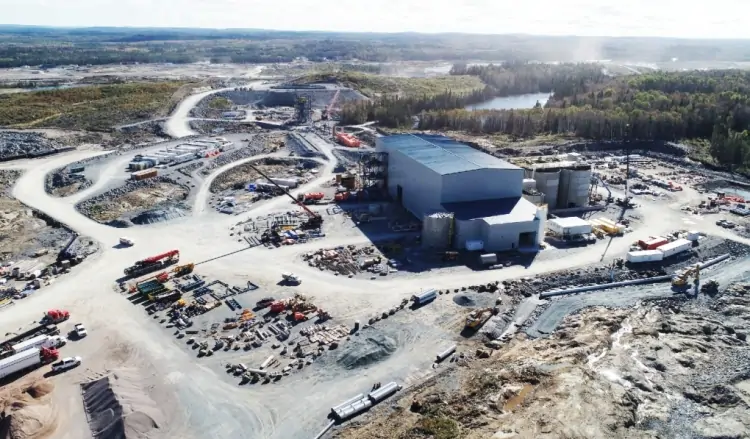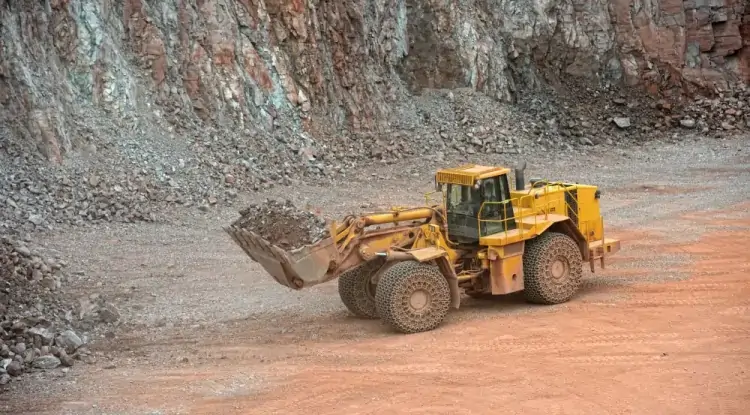Argonaut Gold’s Magino is Canada’s newest producer despite soaring costs, delay
Argonaut Gold (TSX: AR) has achieved commercial production at its Magino mine in northern Ontario after construction costs almost doubled to nearly $1 billion and led to the ouster of a CEO before a mill problem postponed output.


The Reno, Nev.-based company estimated the mine, northeast of Lake Superior, would cost $510 million to build in 2020 but inflation and other challenges increased the final tally to $980 million. Founder, president and CEO Peter Dougherty left in late 2021.
After it poured first gold at Magino on June 15, production was delayed while the mill was repaired for 20 days in September, causing Argonaut to miss this year’s guidance. Argonaut sold another 1% output stream to Franco-Nevada (TSX: FNV; NYSE: FNV), which now holds a 3% net smelter return royalty, to shore up its finances and is considering other asset sales.
BMO Capital Markets said Argonaut stock has near-term positivity as production ramps up although Argonaut will miss BMO’s estimate of producing 57,000 gold-equivalent oz. this year. Third quarter consolidated production was 53,911 gold-equivalent oz., including pre-commercial production of 10,693 gold-equivalent oz. at Magino, Argonaut said.
The mine, which started commercial production on Wednesday, achieves Argonaut’s vision of “becoming a low-cost, mid-tier North American gold producer that delivers value to all stakeholders,” president and CEO Richard Young said in a news release.
Long road to production
The project has overcome a series of setbacks related to inflation and supply issues since Argonaut acquired Magino in 2012. It began building the mine in 2020, but capital cost forecasts rose three more times before completion.
In June 2022, Argonaut raised $195.3 million in a shares issue then inked a US$250-million debt refinancing agreement with a syndicate of lenders to pay for the mine’s development and expansion.
Despite its delays, Argonaut aims to take Magino through an expansion plan that it hopes will make it the lowest-cost producer in Canada within three years. It’s targeting all-in sustaining costs of US$576 per oz., doubling milling capacity to 2,400 tonnes per day and more than doubling annual production to 287,000 ounces. It has a mine life of 19 years.
Argonaut’s looking at Alamos Gold‘s (TSX: AGI; NYSE: AGI) neighbouring Island gold mine to see what it can learn for its expansion, Young said. Alamos is installing a conveyor system underground at Island and sends ore to the surface via skips in the shaft, like it does at its Young-Davidson mine farther east in northern Ontario.
Still, Argonaut plans to sell to Franco-Nevada its non-core royalty holdings in Canada and Mexico for US$29.5 million, as well as the additional Magino royalty. Argonaut has been considering selling its Mexican assets due to high costs and short mine lives, Young said. Those projects, which have been the company’s production mainstay since 2009, include three producing gold-silver mines and one exploration project. Young declined to give a price estimate for the assets.
Ramp-up delay
Magino’s mill was commissioned and ramp-up had risen from 50% to 80% of nameplate capacity during the summer, putting the schedule on track for commercial production by September.
However, the ramp-up was delayed due to unplanned downtime related to issues with the ball and SAG mills, which contractors and suppliers helped resolve, chief operating officer Marc Leduc said. “We are systematically centralizing all control functionality,” he said. “The plant has been largely operating at nameplate capacity since the beginning of the quarter.”
Argonaut said it’s on track to meet its full year consolidated production of 200,000 to 230,000 gold-equivalent oz. and all in sustaining cost guidance of US$1,625 -US$1,725 per oz. set at the start of the year.
With Argonaut’s guidance at Magino, BMO Capital Markets mining analyst Brian Quast updated his forecast to 202,000 annual gold-equivalent ounces. Quast maintains an outperform rating and a $1 target price. The shares were down 3.7% to 52¢ apiece on Friday afternoon in Toronto, valuing the company at $449.6 million. Its shares traded in a 52-week range of 32¢ and 77¢.
Magino hosts proven and probable reserves of 63.3 million tonnes grading 1.16 grams gold per tonne for 2.4 million oz. gold, according to a resource update in March. Measured and indicated resources total 150.8 million tonnes grading 0.94 gram gold per tonne for 4.5 million ounces, inclusive of reserves.
It had been mined periodically since the mid-1920s, producing 114,319 oz. metal from 803,135 tonnes of ore that graded 4.43 grams gold per tonne.














